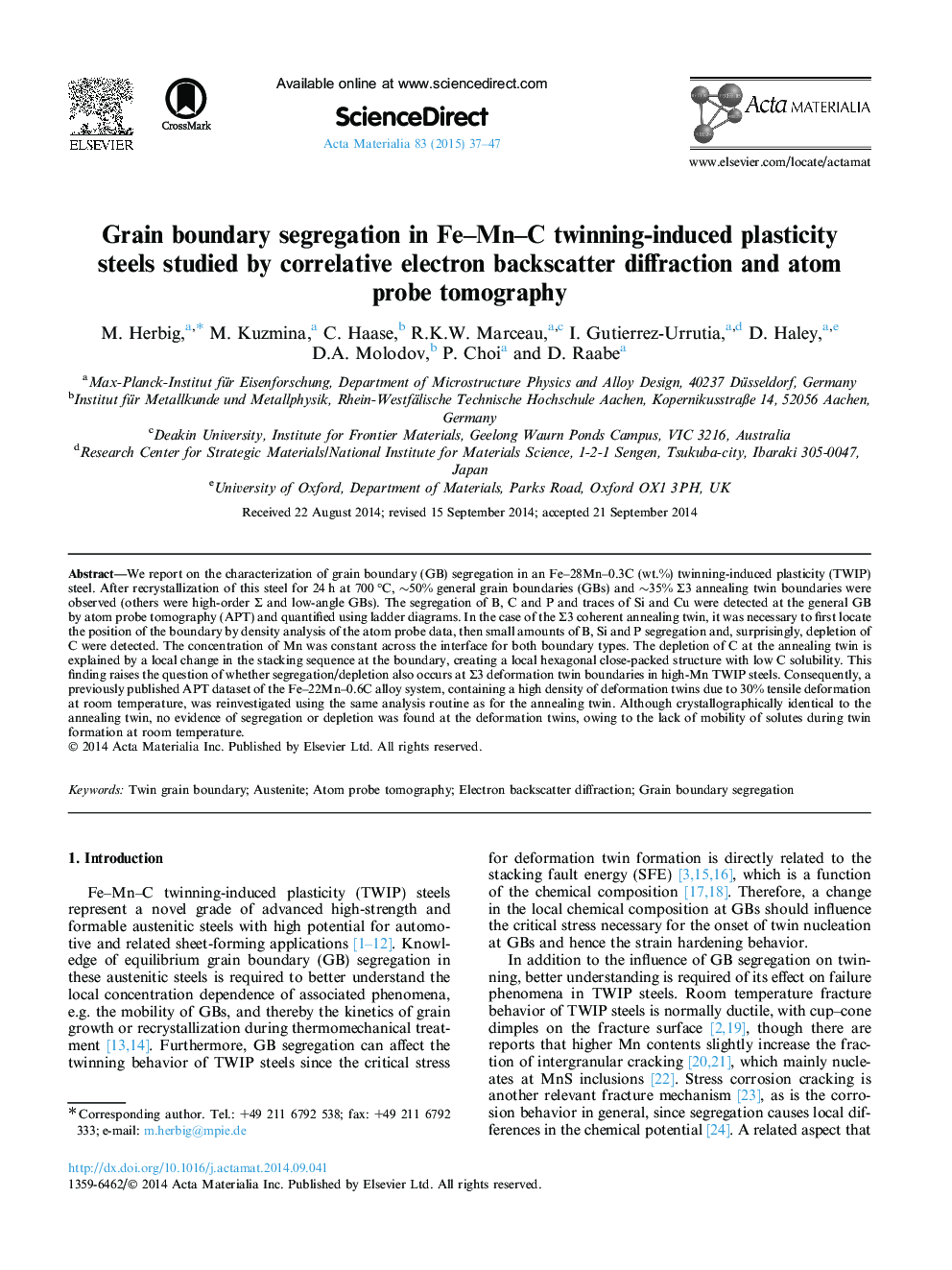| Article ID | Journal | Published Year | Pages | File Type |
|---|---|---|---|---|
| 7880886 | Acta Materialia | 2015 | 11 Pages |
Abstract
We report on the characterization of grain boundary (GB) segregation in an Fe-28Mn-0.3C (wt.%) twinning-induced plasticity (TWIP) steel. After recrystallization of this steel for 24 h at 700 °C, â¼50% general grain boundaries (GBs) and â¼35% Σ3 annealing twin boundaries were observed (others were high-order Σ and low-angle GBs). The segregation of B, C and P and traces of Si and Cu were detected at the general GB by atom probe tomography (APT) and quantified using ladder diagrams. In the case of the Σ3 coherent annealing twin, it was necessary to first locate the position of the boundary by density analysis of the atom probe data, then small amounts of B, Si and P segregation and, surprisingly, depletion of C were detected. The concentration of Mn was constant across the interface for both boundary types. The depletion of C at the annealing twin is explained by a local change in the stacking sequence at the boundary, creating a local hexagonal close-packed structure with low C solubility. This finding raises the question of whether segregation/depletion also occurs at Σ3 deformation twin boundaries in high-Mn TWIP steels. Consequently, a previously published APT dataset of the Fe-22Mn-0.6C alloy system, containing a high density of deformation twins due to 30% tensile deformation at room temperature, was reinvestigated using the same analysis routine as for the annealing twin. Although crystallographically identical to the annealing twin, no evidence of segregation or depletion was found at the deformation twins, owing to the lack of mobility of solutes during twin formation at room temperature.
Keywords
Related Topics
Physical Sciences and Engineering
Materials Science
Ceramics and Composites
Authors
M. Herbig, M. Kuzmina, C. Haase, R.K.W. Marceau, I. Gutierrez-Urrutia, D. Haley, D.A. Molodov, P. Choi, D. Raabe,
